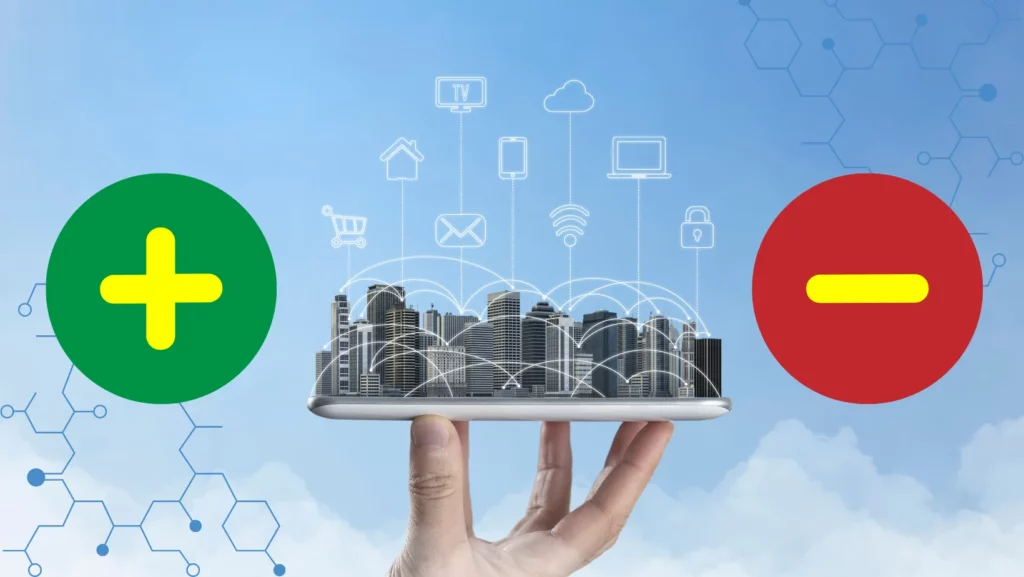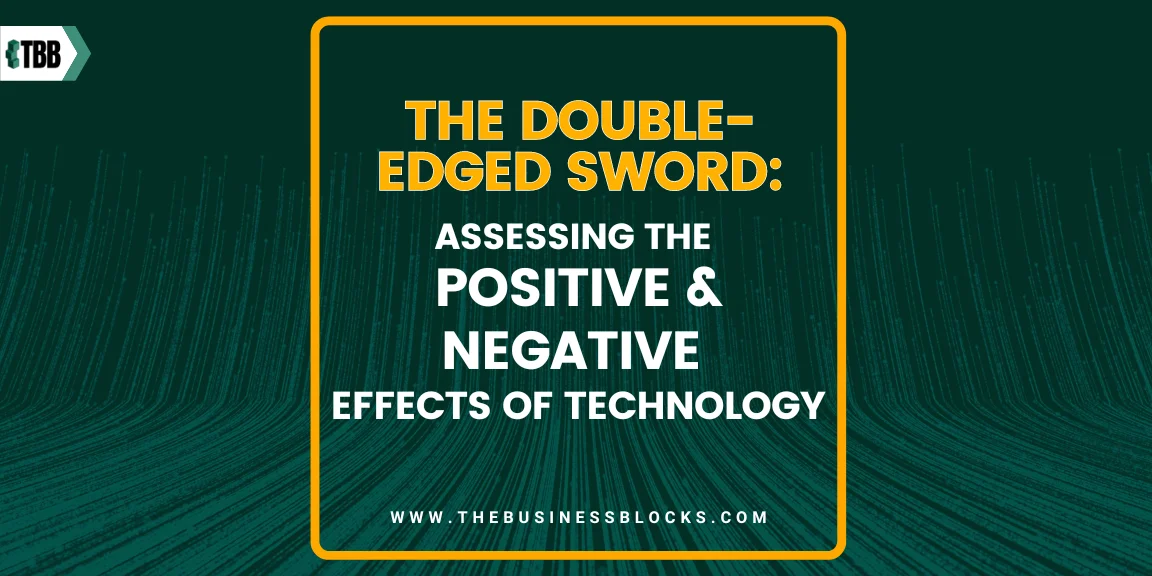In a world powered by innovation, technology acts as a double-edged sword, shaping our lives in ways both uplifting and challenging. This article invites you to embark on a thoughtful exploration of the digital landscape we navigate daily. As we revel in the conveniences technology provides, it’s crucial to uncover the shadows it casts.
Join us to untangle the complexities, examining the bright promises and potential pitfalls that come hand-in-hand with our tech-driven existence. Let’s navigate the twists and turns of progress together, shedding light on the multifaceted impact that technology has on our world.
Are you curious about the true impact of technology on our lives?
Uncover the fascinating interplay between innovation and consequence. From the convenience of connectivity to the shadows on society’s fabric, we dissect the dual nature of the tech revolution. Join us as we reveal the promises and challenges that lie within the very core of our tech-infused existence.
Imagine gaining insights that empower you to navigate the complexities of our digital age. Picture yourself equipped with a nuanced understanding of both the uplifting advancements and the potential pitfalls that technology brings. This is your key to unlocking a deeper comprehension of the digital landscape.
Empower yourself with knowledge and be at the forefront of conversations shaping our tech-driven world, Read on!
Elaborating Technology
Technology refers to the application of scientific knowledge, tools, and techniques to meet specific human needs and solve practical problems. It encompasses a wide range of processes, methods, materials, and devices used to achieve various objectives, from improving efficiency in daily tasks to advancing scientific research and exploration.
Technology is not limited to electronic devices or computers; it includes everything from simple tools like a hammer or wheel to complex systems like information technology, medical equipment, and industrial machinery.
In essence, technology involves the creation, modification, usage, and knowledge of tools, machines, systems, and methods to solve problems and achieve goals. It plays a crucial role in shaping human society, influencing how we communicate, work, travel, and interact with the world. The rapid evolution of technology has been a defining characteristic of the modern era, bringing about significant changes in virtually every aspect of our lives.
Did you know?
- 5 billion people in the world own a mobile device.
- 8% of the global population is addicted to the internet, and 85% of American adults can’t go a day without using it – this shows how dependent people have become on technology.
The Importance of Knowing the Effects of Technology

Understanding the effects of technology is crucial in navigating the complex landscape of the modern world.
Here’s why it’s important:
Informed Decision-Making:
Awareness of technology’s effects allows individuals to make informed decisions about its use in their personal and professional lives. This knowledge empowers people to choose technologies that align with their values and goals.
Mitigating Negative Consequences:
Knowing the potential drawbacks of the technology enables proactive measures to mitigate negative consequences. This includes addressing issues such as privacy concerns, social isolation, and environmental impact.
Adaptation to Change:
Technology is dynamic and constantly evolving. Understanding its effects helps individuals and businesses adapt to change, stay relevant, and seize opportunities presented by emerging technologies.
Optimizing Positive Impact:
Awareness of technology’s positive effects allows individuals, organizations, and policymakers to optimize its benefits. This may involve leveraging technology for innovation, efficiency, and societal progress.
Ethical Considerations:
Knowledge about the effects of technology fosters ethical considerations in its development and use. This includes addressing issues of equity, fairness, and the impact on vulnerable populations.
Health and Well-being:
Being aware of the effects of technology on physical and mental health helps individuals adopt healthy technology habits. This involves managing screen time, addressing digital addiction, and promoting a balanced lifestyle.
Educational Advancement:
In educational settings, understanding the effects of technology is essential for curriculum development and preparing students for the digital age. It ensures that education remains relevant and equips learners with the skills needed in a technology-driven society.
Privacy Protection:
Awareness of technology’s impact on privacy is crucial for safeguarding personal information. Individuals who understand the risks can take steps to protect their privacy and advocate for stronger privacy regulations.
Social Impact:
Technology has profound social implications. Understanding its effects helps communities address issues such as social inequality, digital divides, and the impact of technology on cultural norms and relationships.
Environmental Responsibility:
Recognizing the environmental effects of technology allows for responsible choices that minimize ecological impact. This includes supporting sustainable practices and advocating for environmentally friendly technologies.
Policy Development:
Policymakers need a deep understanding of technology’s effects to develop effective regulations and policies. This ensures that legal frameworks keep pace with technological advancements and protect the public interest.
Knowledge about the effects of technology is a foundational element for responsible and informed engagement with the digital world. It empowers individuals, communities, and societies to navigate the opportunities and challenges posed by technology, fostering a more sustainable, equitable, and ethical technological landscape.
Weighing the Positive and Negative Sides of Technology

Assessing the positive and negative aspects of technology involves considering the advantages and disadvantages that technological advancements bring to various aspects of our lives.
Here’s a balanced exploration of both sides:
Positive Sides of Technology:
Efficiency and Productivity:
Technology streamlines processes, automates tasks, and enhances productivity in various industries and everyday activities.
Communication and Connectivity:
Advancements in communication technologies have facilitated instant and global communication, bringing people and ideas together.
Access to Information:
Technology provides unparalleled access to information, fostering education, research, and global knowledge-sharing.
Medical Advancements:
Technology has revolutionized healthcare, improving diagnostics, treatments, and patient care.
Innovation and Creativity:
Technological tools empower individuals and businesses to innovate, create, and bring novel ideas to fruition.
Negative Sides of Technology:
Privacy Concerns:
The widespread use of technology raises concerns about the protection of personal information and the potential for surveillance.
Social Isolation:
Excessive use of technology, especially in the form of social media, can contribute to social isolation and a decline in face-to-face interactions.
Job Displacement:
Automation and artificial intelligence have led to concerns about job displacement and the need for reskilling in the workforce.
Environmental Impact:
The production and disposal of technology devices contribute to electronic waste, and some technologies may have negative environmental effects.
Dependency and Addiction:
Excessive reliance on technology can lead to addiction and dependency issues, especially concerning smartphones, social media, and video games.
Balancing the positive and negative aspects of technology involves thoughtful consideration of its impact on individuals, society, and the environment. It calls for responsible use, ethical considerations, and ongoing efforts to mitigate potential drawbacks while maximizing the benefits that technology can offer.
Exploring the Ups and Downs of Digital Advancement on Our Health
Examining the positive and negative aspects of digital advancement on our health involves a nuanced analysis of how technology impacts well-being.
Here’s a closer look at both sides:
Upsides of Digital Advancement on Health:
- Telehealth and Remote Monitoring: Digital technologies enable remote health monitoring and telehealth services, improving access to medical care and consultations.
- Health Tracking Apps and Wearables: Mobile apps and wearable devices help individuals monitor their physical activity, sleep patterns, and overall health, promoting proactive well-being.
- Medical Research and Innovation: Advanced technologies contribute to breakthroughs in medical research, leading to improved diagnostics, treatments, and understanding of diseases.
- Personalized Medicine: Digital tools allow for personalized treatment plans based on individual health data, optimizing healthcare interventions for better outcomes.
- Health Education and Awareness: Technology facilitates the dissemination of health information, empowering individuals to make informed decisions about their lifestyles and well-being.
Downsides of Digital Advancement on Health:
- Sedentary Lifestyle: Prolonged use of digital devices can contribute to a sedentary lifestyle, which is linked to various health issues, including obesity and cardiovascular problems.
- Digital Eye Strain: Excessive screen time may lead to digital eye strain, causing discomfort, headaches, and sleep disturbances.
- Mental Health Concerns: Social media and online interactions can impact mental health, contributing to issues such as anxiety, depression, and cyberbullying.
- Sleep Disruption: Electronic devices before bedtime can disrupt sleep patterns due to exposure to blue light and increased mental stimulation.
- Privacy and Security Risks: Health-related data collected by digital health devices may be vulnerable to privacy breaches, raising concerns about the security of personal health information.
Balancing the upsides and downsides of digital advancement in healthcare requires a thoughtful approach that maximizes the benefits while addressing potential drawbacks. It underscores the importance of responsible technology use, user education, and ongoing research to optimize the positive impact on our health.
How to Act on Technology’s Dual Nature?

To navigate technology’s dual nature effectively, individuals and societies must prioritize informed and responsible engagement. Start by promoting digital literacy initiatives that empower users to critically assess information, protect their privacy, and use technology ethically. Advocating for strong privacy laws and supporting businesses that prioritize ethical practices can help safeguard personal data.
Encourage a balanced approach to screen time, especially for children, and foster awareness of the potential impact on mental health. Additionally, stay informed about sustainable practices in technology consumption and disposal, minimizing environmental repercussions. Actively participating in public discourse and supporting innovations that prioritize positive societal impact are key steps in shaping a future where technology’s benefits are maximized, and its drawbacks are mitigated.
Furthermore, individuals can contribute to a responsible tech landscape by staying informed about the societal implications of emerging technologies. Engage in conversations about the ethical considerations of artificial intelligence, automation, and other innovations. Support educational initiatives that equip people with the skills needed to thrive in a tech-driven world. By actively participating in the dialogue surrounding technology, individuals can contribute to a collective effort to shape a future where innovation aligns with ethical, equitable, and sustainable principles.
7 Tips to get more out of everyday Technology

Maximizing the potential of everyday technology has become essential for navigating the demands of modern life. Whether you’re aiming to boost productivity, stay connected, or enhance your overall well-being, strategic use of technology can be a game-changer.
Here are the 7 Tips offering practical insights to help you harness the power of digital tools for efficiency, continuous learning, and a balanced lifestyle.
- Stay Organized with Productivity Apps:
Utilize productivity apps to streamline tasks, manage schedules, and stay organized. Calendar apps, to-do lists, and note-taking applications can help optimize your time and increase efficiency.
- Embrace Continuous Learning through Online Resources:
Take advantage of online platforms and educational apps to foster continuous learning. Whether it’s learning a new skill, taking online courses, or staying updated on industry trends, technology provides ample resources for personal and professional development.
- Prioritize Digital Well-being:
Set boundaries for screen time and use features within devices to monitor and manage your digital well-being. Schedule breaks, enable “Do Not Disturb” modes, and consider using apps that track and limit your time on specific applications to maintain a healthy balance.
- Optimize Communication with Collaboration Tools:
Enhance communication and collaboration by using tools like video conferencing apps, project management platforms, and messaging apps. These tools facilitate seamless interactions, especially in remote or team-based work environments.
- Automate Repetitive Tasks:
Explore automation tools to simplify repetitive tasks and save time. From email filters to task automation apps, leveraging technology to handle routine activities allows you to focus on more strategic and creative aspects of your work and life.
- Secure Your Digital Presence:
Prioritize your online security by using strong, unique passwords and enabling two-factor authentication. Regularly update software and applications to patch security vulnerabilities, and be cautious about sharing personal information online to protect your digital identity.
- Explore Health and Fitness Apps:
Enhance your well-being by incorporating health and fitness apps into your routine. From workout tracking apps to mindfulness and meditation applications, technology can support your physical and mental health goals, providing personalized guidance and motivation.
By incorporating these tips into your daily routine, you can harness the full potential of everyday technology to enhance productivity, foster continuous learning, and prioritize your well-being.
Frequently Asked Questions About The Double-Edged Sword: Assessing the Positive and Negative Effects of Technology
Q: What is the purpose of “Assessing the Positive and Negative Effects of Technology”?
A: The primary purpose of this article is to explore and evaluate the impact of technology on various aspects of our lives, providing insights into both its positive and negative effects.
Q: Why is it essential to understand both the positive and negative aspects of technology?
A: Understanding both positive and negative aspects is crucial for making informed decisions, fostering responsible technology use, and addressing potential challenges. It enables individuals and societies to navigate the complex landscape of technological advancements more effectively.
Q: What positive effects of technology are discussed in the article?
A: The article delves into positive impacts such as increased efficiency, connectivity, advancements in healthcare, innovation, and improved access to information. It aims to provide a comprehensive view of how technology enhances our lives and contributes to societal progress.
Q: How does the article address the potential negative effects of technology?
A: The article examines potential negative consequences, including privacy concerns, social isolation, job displacement due to automation, environmental impact, and challenges related to mental health and well-being. It aims to present a balanced perspective on the drawbacks associated with technological advancements.
Accordion HeadingQ: How can the information in the article be applied in everyday life and decision-making?
A: The information provides a foundation for making informed choices about technology use, advocating for responsible practices, and actively participating in discussions about the societal impact of technology. It empowers individuals to navigate the digital landscape with awareness and responsibility.
Final Thoughts
“The Double-Edged Sword: Assessing the Positive and Negative Effects of Technology” highlights the nuanced impact of technology on our lives. While it brings convenience and progress, it also poses challenges. To navigate this digital landscape, it’s crucial to stay informed, promote responsible tech use, and actively contribute to discussions about the ethical and societal aspects of technology. By doing so, we can strive for a future where technology enhances our lives while minimizing potential drawbacks.

